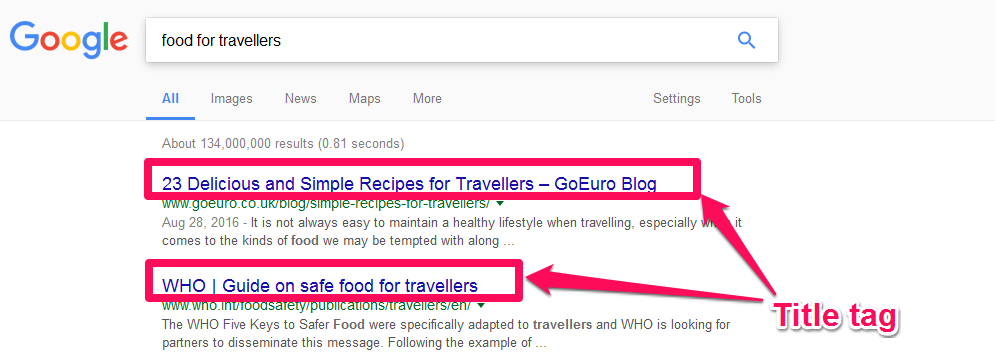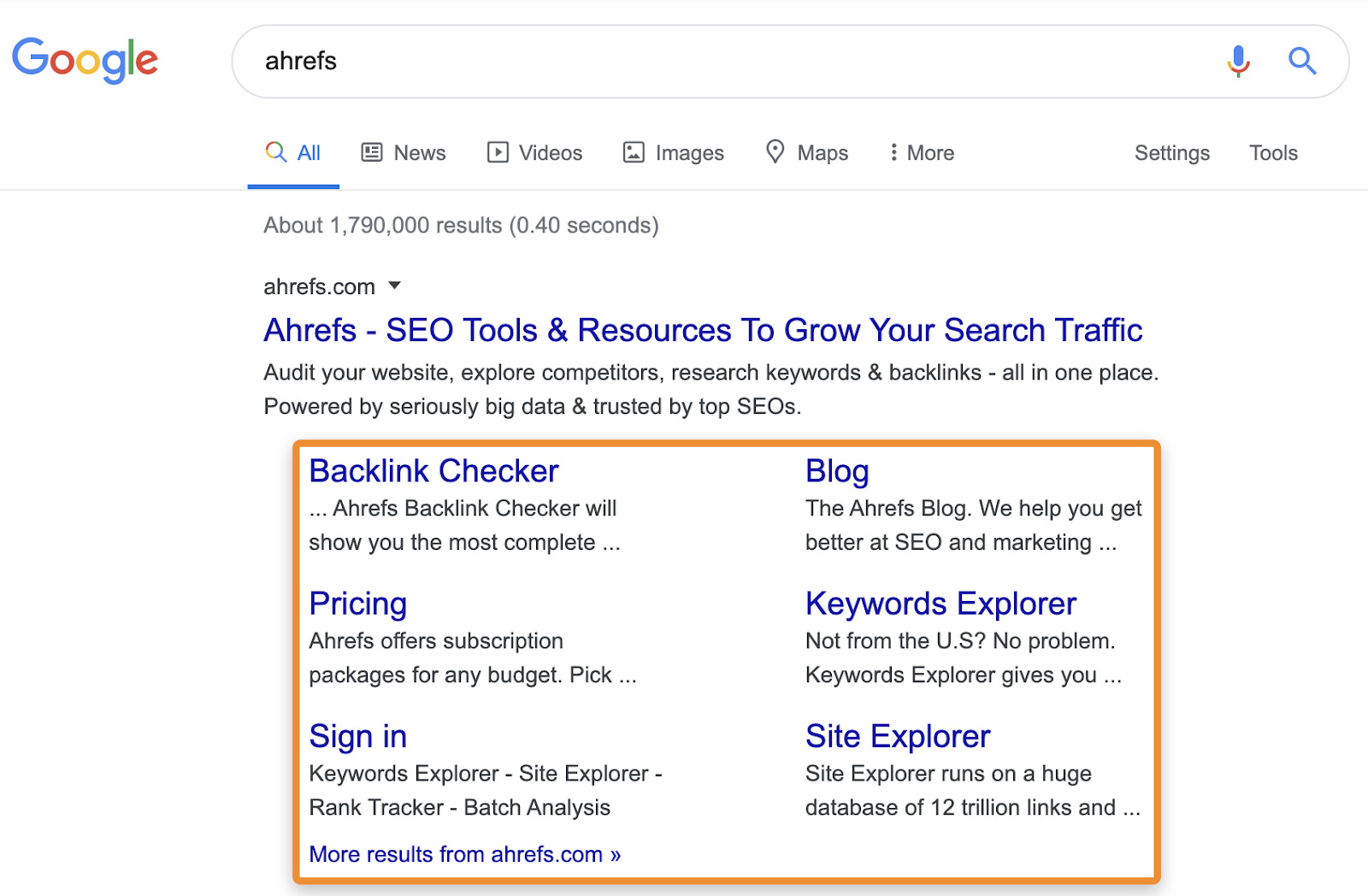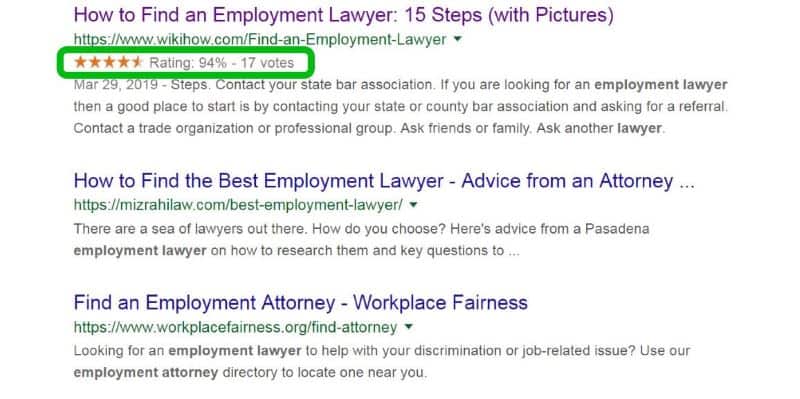With 3.5 billion searches a day, Google has become the most popular search engine for researching products and services before making a purchase decision. As 94% clicks are from the first page of Google, staying on the top of the search results has become crucial for every business and industry.
When a user submits a search query, the page that is displayed by the search engines is known as Search Engine Result Page (SERPs). These pages comprise of a combination of paid results and organic results. 90% of traffic goes to websites that rank on the first page of Google search results. The first 5 organic results in the SERPs account for 67.6% of all clicks. (ImpactPlus)
As per researches, 75% of Google searches never visit the second page of search results. Hence, every marketer’s goal is to rank at the topmost position in the SERPs. Each website result is visible in the form of a Google snippet in the search engine result page. You can build deeper engagement and drive more clicks by optimizing Google SERP snippet components.
Let’s understand Google SERP snippet and its components.
Page Contents:
What is Google SERP snippet?
A Google SERP snippet previews the webpage in the search engine result pages. Snippets mostly contain website title, a short description of the page content and the site URL. With the help of a Google snippet tool, you can optimize how the snippet will be displayed in the Google search results which in turn increases the chances of maximizing click-through rates and driving more traffic to your site.
What are Google SERP snippet components?
Google snippet results are automatically generated based on its content and references appearing on the web. Its primary purpose is to provide relevant details that best match a user’s query. You can help improve the snippet quality by optimizing SERP snippet components.
Following are the Google SERP snippet components that are commonly found in Google search results.
Title
Title in the SERP snippet result is defined as the page title that plays a crucial role in increasing the clickability of the webpage displayed in the Google search results. As it is a major factor that influences users to decide which result to click on, it is important to create good quality title that persuades users to click and visit the site.
A well-optimized Title enables search engine crawlers in gaining better understanding of the page content and relevancy. Users are provided with vital details that persuade readers to click on the site link and read the text.
How to optimize for Titles?
Always create a webpage Title: Title tag optimization is one of the most important parameters in On-page SEO. Some marketers make the mistake of not creating page titles. This can have an adverse effect on your site’s SEO leading to lower ranking in SERPs.
Make sure to create page title for each webpage. Plugins such as Yoast SEO can help you generate an effective page title. Also, ensure that the Title of each webpage is specified within the Title tag.
Avoid creating too long and too short Titles: Lengthy Titles are not good for SEO. A long text loses the relevance of the title making it complicated to read. Too short title has a negative impact on the content readability and visibility. As per guidelines recommended by Google, it is important to keep title length around 60-70 characters.
Never do keyword stuffing: Never use too many keywords in the Title. Over-optimized Title tags may adversely affect the site ranking and SEO score. Also, avoid merging two keywords in the same Title instead include only the primary keyword in the Title.
Avoid using repeated Titles for pages in your site: Each page in your site should have unique Titles related to the page content and topic. Make sure that the titles are not identical to your business or brand name.
Start optimizing for local search: Local SEO is important for businesses serving specific locations. Optimizing for local search is useful for letting people know where your business is located and connect with the target audience of a particular region. It also helps in improving the site ranking and building brand presence.
Focus on adding value: Title name should just not relate to marketing or advertising purposes. The key is to make it relevant, meaningful and informative so that readers can know what the site is about. An effective title should always be a combination of main keyword, short description and a Call to action.
Adding your site name with the page title improves the readability of the page content thereby adding value to the user experience.
URL
URL is the first thing that appears in a Google SERP snippet. URL is defined as a website address in the internet. A good URL structure allows search engine crawlers to make relevant connections between different pages on the site and also helps to index a webpage in a better way. Optimizing URL is crucial for SEO as it provides information about the page content, its context and has a great impact on the ranking and visibility of a website.
How to optimize your site URL?
Follow a standard URL structure: A well-structured organized URL makes crawling, indexing and ranking easy for search engines. Website architecture has a major influence on the site speed and is one of the most important factors in improving site ranking in Google SERPs.
Select the categories and sub-categories of your site and how will they be displayed in the different webpages of your site. Make sure to stick to only the important categories as lengthy URLs have adverse effect on the SEO score.
Customize the URL to make it relevant: Instead of using automatically generated URLs, it is recommended to edit them to make it relevant as per the page content. Customizing each URL enhances the readability of the text making it useful both for readers and search engines.
Include the target keyword: Including the primary keyword for the blogpost in the URL can help you achieve higher site rank in no time. Using target keyword related to products and categories enables search engine bots to find and index your site which in turn boosts site visibility in the search engine result pages.
Use Hyphens to separate words in URL: If you have multiple words in a URL, it is recommended to use hyphens to separate them. Using hyphens to break different words makes it easy for Google to understand a page URL. As Google bots can only read and interpret hyphens, it is advised not to use underscore for separating words in a page URL.
Keep the URL structure short and simple: Make sure that the URL does not contain any unnecessary words or characters as it can adversely affect your site rank. Also, avoid repetition of keywords in the URL. The length of a URL has a significant effect on the site’s SEO score. Drop any stop words in the URL such as a, the, and, or, but, and, of, etc. Keep the URL structure short so that it is easily understandable by search engines and users.
Description
Meta Description is a short description of the webpage content and is placed underneath the page title. A clear and concise Meta Description can increase your click-through rate resulting in improved site rank.
How to optimize Meta Description?
Create engaging description: An engaging meta description with the focus keywords can significantly improve the readability thereby increasing the click-through rate. The description should be written in such a way that compels readers to click on the link and read the page.
As meta description plays a crucial role in capturing visitors attention to the page content, it should be interesting to read and add value to the user experience.
Deliver value: Meta description should not just appear like an Ad copy. The purpose is to add value to the customer experience and create solutions. Focus on creating user-centric description that explains the benefits and provides a reason to click on the site link.
Place the most important information at the beginning of the text that aims to help readers and offer value.
Always write unique Meta description: For best SEO results, it is suggested to create different meta descriptions for each webpage. Unique webpage descriptions enables search engine crawlers in identifying the content targeted to specific keywords and ranking the same.
Duplicate meta description tags are not recommended as similar descriptions may negatively affect the site visibility in the SERPs.
Keep the description length upto 160 characters: Best practice is to keep the Meta description length between 120-150 characters. Writing longer descriptions is not recommended as search engines cut off the extra characters and adds an ellipse at the end of the maximum character limit. Hence, try to create concise meta description that is appealing to read and is within the suggested word limit.
Include the target keywords in the Description: Adding your target keywords in the Meta Description enables search engine crawlers to easily find your content on the web thereby improving the site visibility. Make sure to add relevant keywords related to the context and topic of the webpage. However, avoid inserting too many keywords as it can negative impact the site ranking and SEO score.
Sitelinks
Sitelinks are additional webpage links that appear below the main link in the search engine results pages. They allow users to browse a site directly from search results before even visiting the website. It makes your site more prominent in search results by placing the important webpages link beneath the primary result.
A user gets to explore the site in the shortest amount of time resulting in more visitors and more clicks.
How to optimize for Sitelinks?
Sitelinks are generated automatically. Google has not laid out any guidelines for displaying sitelinks in the SERPs. However, you can follow best SEO practices to increase your chances of getting sitelinks on the search engine result pages.
Choose a unique website name: Website names that are too generic fail to catch reader’s attention. Website Brands that have unique and interesting names are much easier to rank in the search engine result pages. Hence, to establish your brand identity, it is recommended to choose new and different brand names that are not similar to the other competitive sites in your niche.
Add structured data to your site: You can incorporate Structured data, commonly known as Schema in your website code to make it easily understandable by the search engine crawlers.
By adding schema code in your website, you can help Google bots in understanding the content and emphasizing webpages that you want to feature in the Sitelinks. WordPress users can install Plugin named Schema Pro to set up schema code in the site without the hassle of coding.
Make sure to setup SEO-friendly website architecture: Websites with clear structure and architecture have higher chances of getting Sitelinks. You site structure should be easy to navigate, have organized structure that enables visitors to find and locate information easily. A good Site architecture is a crucial parameter of an effective SEO strategy that can help you get Sitelinks.
Aim to rank at the top in search results: It is easier to get Sitelinks if you are at the topmost position in the search results page. One of the basic prerequisite for getting Sitelinks is to rank at the top search results in the Google SERPs. Implement On-page SEO practices to get placed at the topmost search results and maximize your chances of getting sitelinks.
Add a sitemap to your Google Search Console Account: Sitemap is a website map that comprises of the site structure, sections, links between the webpages, etc. Sitemap makes navigation easy and helps Google in crawling and indexing the site.
To add sitemap, login into your Google Search Console account and click on your website. Then, click on the ‘Sitemaps’ link on the dashboard. On the next screen, click on ‘Add Sitemap’ and add the location of your sitemap. You can also insert a Sitemap using a WordPress Plugins such as Yoast SEO or All in one SEO.
Build internal links: An internal link is a link from one page to another page. As Google follow links to index and rank a piece of content in the SERPs, a large number of internal links in an article signals the search engine bots that the content is valuable. Using the right internal links with a proper anchor text, you can get sitelinks and also improve the visibility of your site in the search results.
Ratings
Review snippet is a kind of rich snippet that displays review stars, ratings for products and services in the search engine result pages. These are generally visible for products, books, movies, local businesses, etc. The presence of star ratings and reviews in your website’s search results can help you stand out from your competitors.
You can enable this feature by adding Schema Markup code on your site.
How to get star ratings in Google SERP snippets?
- Collect reviews: Reviews have to be collected directly from the business’s website. Reviews taken from 3rd party sites do not qualify for star rating.
- Display reviews on your site: Once the reviews are collected, display them into your website. It is recommended to create a separate page for showcasing reviews.
- Add the Schema Markup code: Next step is to add the aggregateRating schema markup to your display review widget from the widget setting page.
Use of SERP snippet tool
A Google search preview tool simulates Google search engine result pages. Once you enter the title, meta description and URL of your webpage, this tool will generate a virtual SERP snippet based on the details you entered. This provides an overview of how your webpage will look in the Google search results.
Using a SERP snippet preview tool, you can increase your organic search engine traffic by constructing page titles and meta description tags that have the potential to pull the attention of your target audience. This improves your site’s click through rates helping you outrank the competitors.
The usage of a SERP tool is especially useful in scenarios where ranking on topmost search results is difficult due to high competition, presence of authority sites such as Wikipedia, Government websites, etc. Therefore, you can boost your site’s visibility even if your site is not ranking on the first page of Google search results by opting for a SERP snippet tool.
Also you can check: Google SERP Checker
How Serpok helps in Google SERP optimization?
Serpok Google Snippet Optimization tool enables you to view the Title tag, URL and Meta description in the search results as you write them. Using our SERP snippet tool, you can try different combinations to find the right match of organic search engine result listing that fits with your business requirements and purposes.
Now, you can easily optimize your organic search listing and outrank the competitor sites. You just need to enter the details and our SERP tool will automatically generate a Google result listing as per the set specification. Use Serpok to optimize snippets and maximize your click-through rate. Sign up and explore.




